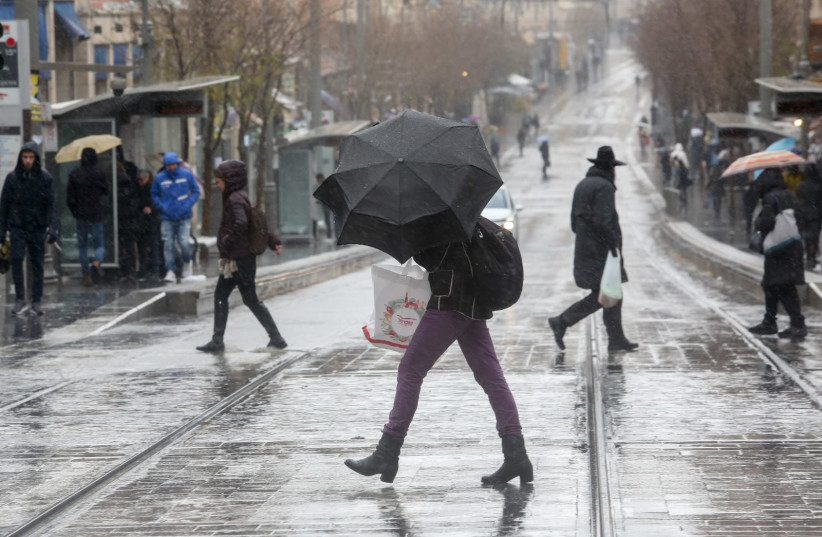The rainfall that Israel received on Wednesday was not only unusual for this late summer period, but for Israel as a whole: There have only been three similar events since the early 20th century, according to the Israel Meteorological Service.
Significant rainfall in central and southern Israel in the first part of September is rare, with very few such events in the past, including on September 13-14, 1951, and September 11-12, 1932, when 95 mm. were recorded near Gush Etzion; and on September 9-10, 1909, when 28 mm. were recorded in Jaffa, according to Amos Porat, head of climatic services at the Israel Meteorological Service.
In addition, in September 1959, there was a sequence of four to five rainy days in the first half of the month, Porat added.
The rain entered the region overnight Tuesday-Wednesday from Gaza and then spread to the southern and central coastal plain and the lowlands in the early morning hours, Porat explained.

There was continuous rainfall for several hours in the Gush Dan area in the morning and in the northwestern Negev towards midday, with rain clouds developing over northeastern Israel, the southern Dead Sea area, and the northern Arava as well.
Precipitation levels were up to 39 mm. in the southern Gaza-border communities, and exceeded 40 mm. in the Tel Aviv-Herzliya area.
Unofficial measurements and indications from the Israel Meteorological Service also point to localized precipitation exceeding 50 mm. in the Hevel Shalom region near the Western Negev. In the Sharon region, the southern coastal plain, and the northern Gaza envelope, rainfall ranged from 10 to 20 mm. Moving towards the Samaria region and the western Jerusalem Mountains, the country observed between 5 and 15 mm. of rain.
Other parts of central and southern Israel and northern eastern Israel received less than 5 mm. of rainfall. The regions of the north of Israel experienced nearly no rain whatsoever.
According to Porat, the rain was a remnant of the Mediterranean’s devastating Storm Daniel, which ravaged Greece and Libya at the beginning of the month with hundreds of millimeters of rain in some areas.
In Greece, the storm caused the loss of 11 lives and significant damage to infrastructure. In Libya, where the storm lingered for two days, thousands of people were killed after massive flooding.
The storm then continued eastward toward Egypt, gradually weakening on its overland trajectory. The runoff from the storm eventually reached Israel but, fortunately, had lost strength.
Was the storm connected to climate change?
“While it’s challenging to link a specific event to climate change directly,” Porat said, “the event’s unusual nature and the recent increase in extreme events may indicate a trend towards more frequent extreme events in this era of climate change.
“It’s worth noting that an increase in the frequency of summer rain events has been observed in the last two decades,” Porat added. “While these events alone may not indicate a change in precipitation patterns or a shift towards rainy summers in the future, it is possible to link these non-routine events to the expected increase in extreme events as part of climate change.”
